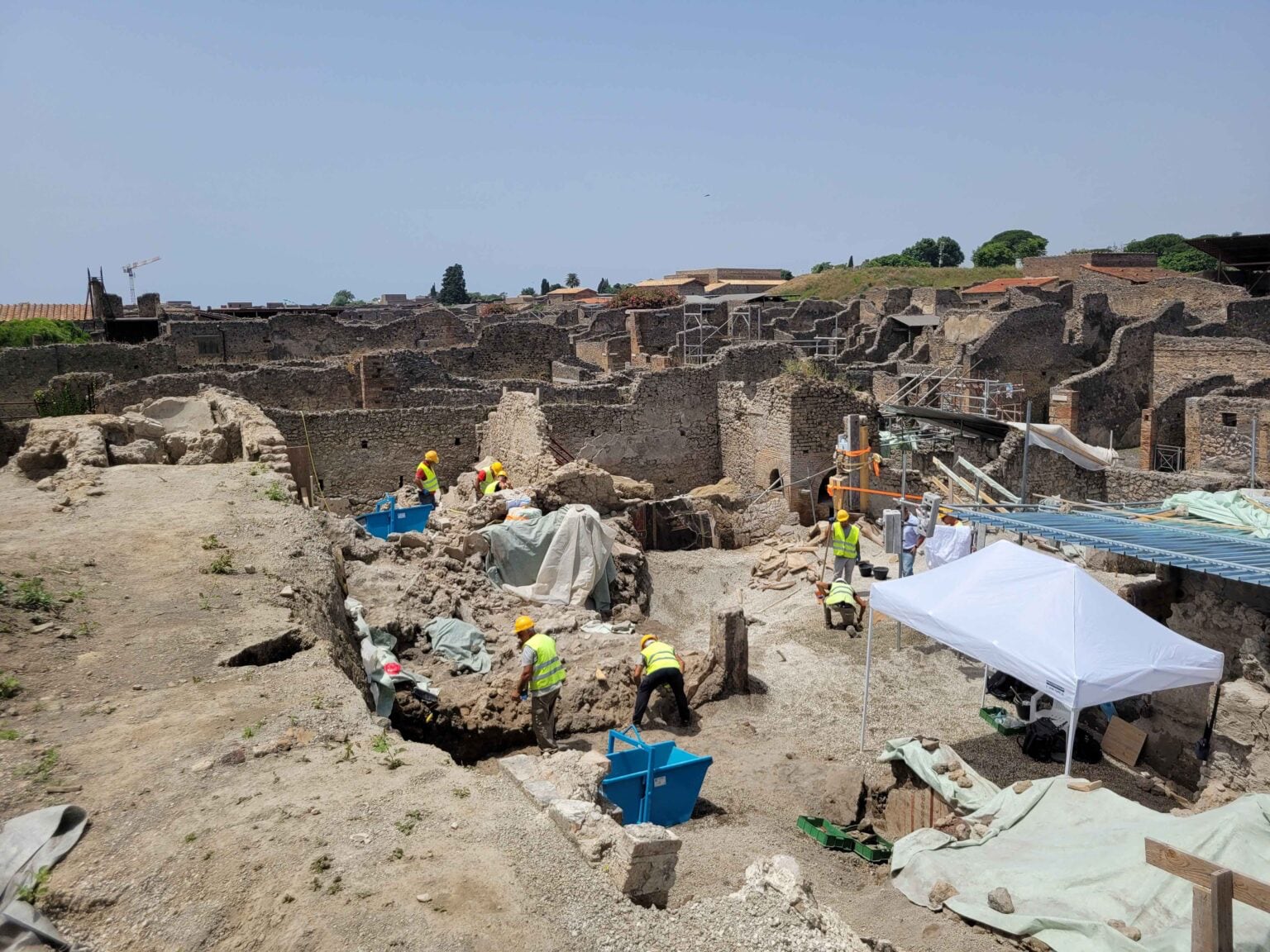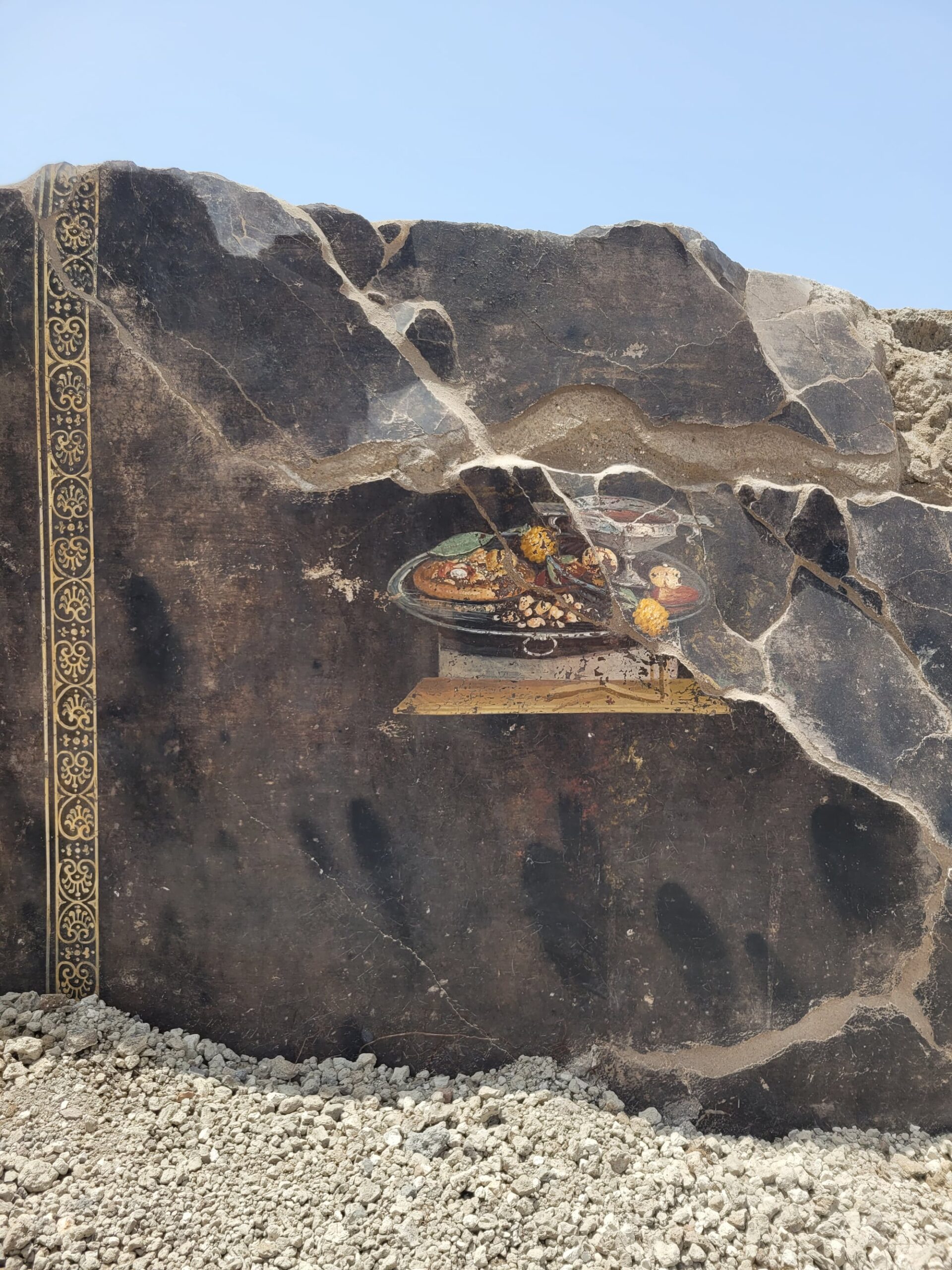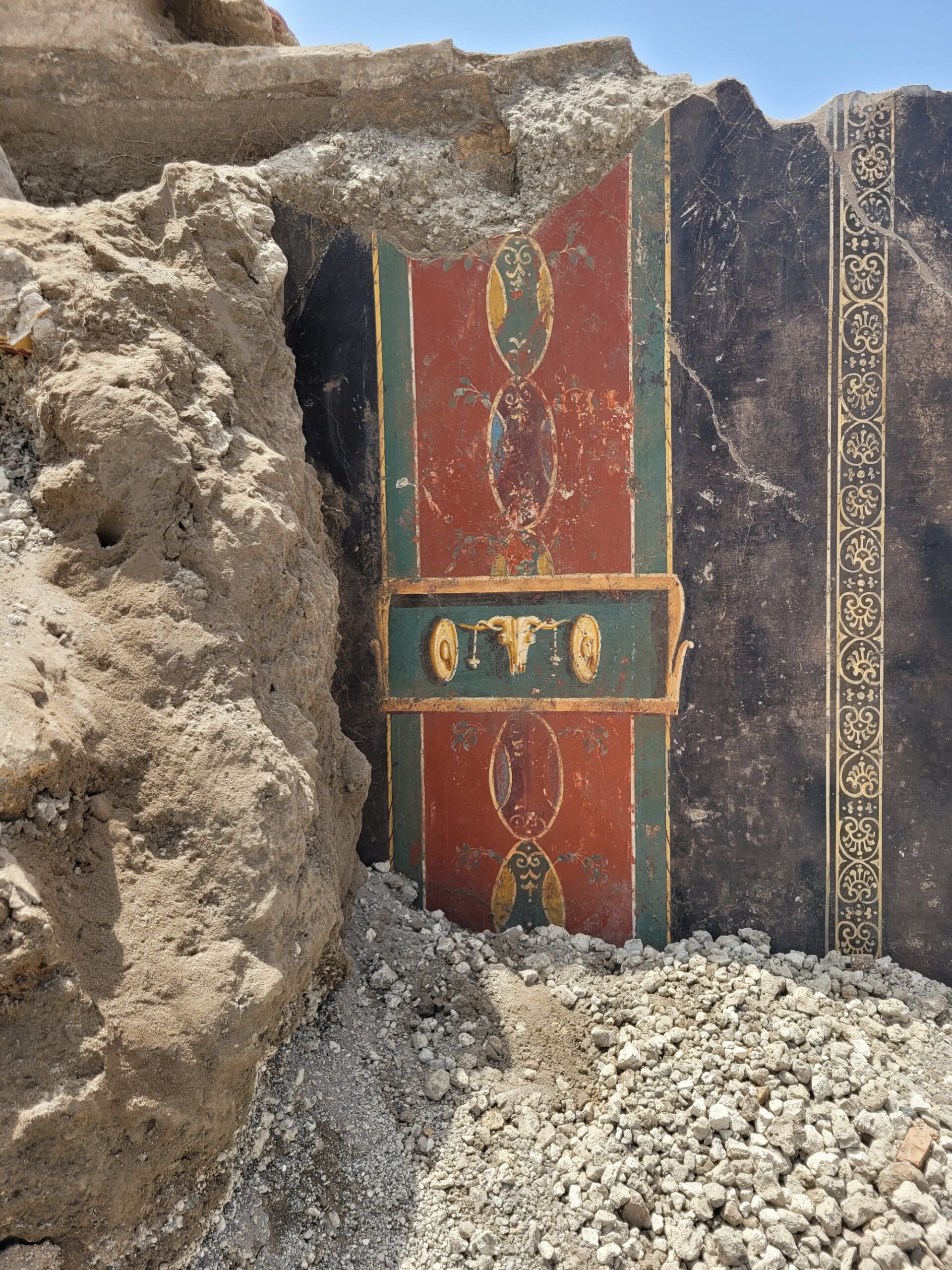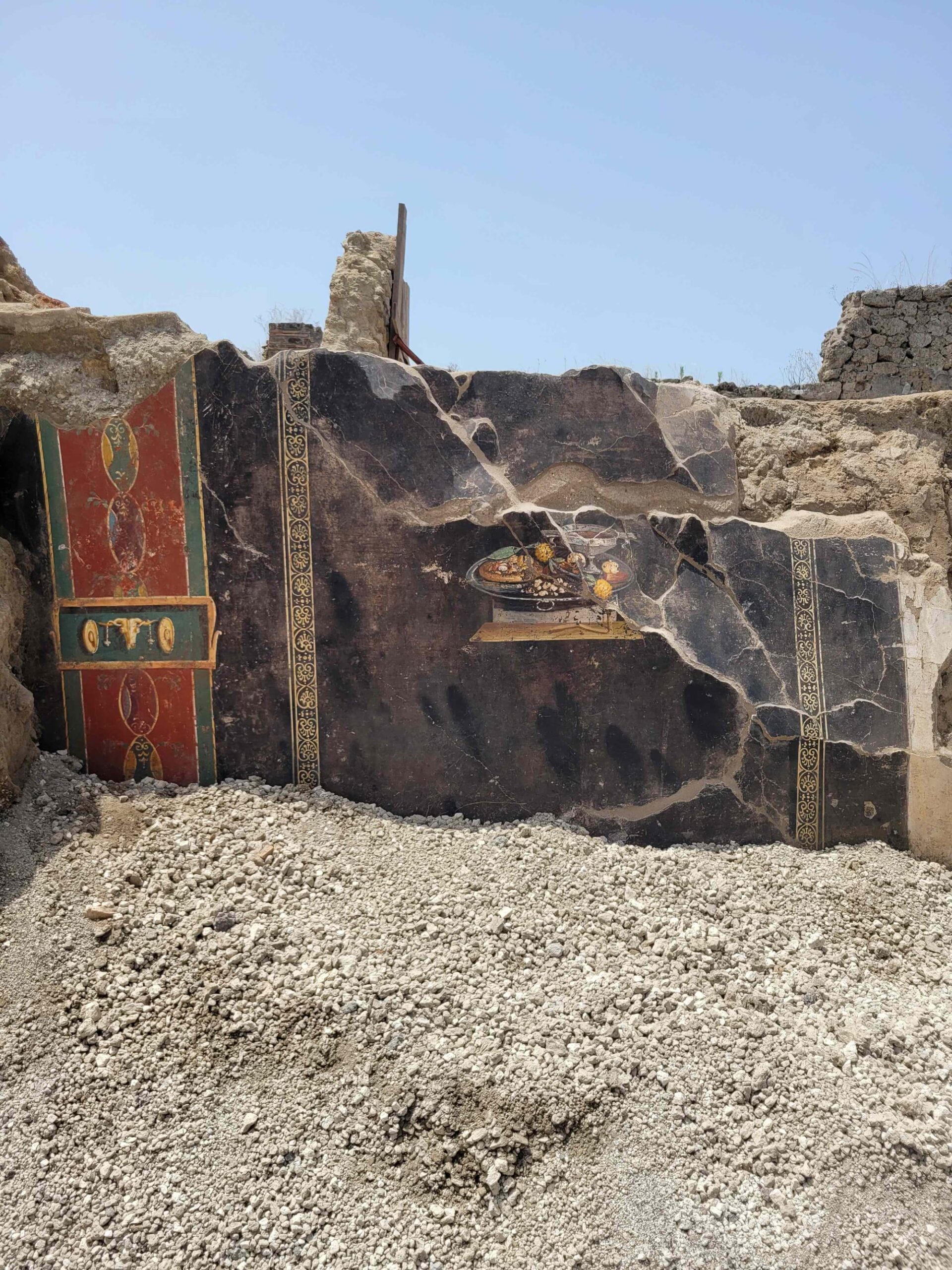In the early part of this year, a remarkable discovery was made by archaeologists during an excavation project in a residential area, known as Regio IX, of the ancient city buried by Vesuvius. Unearthed was a fascinating fresco depicting a round, dough-like culinary delight that bears a resemblance to the modern-day crowd-pleaser – pizza.
However, the researchers were quick to clarify that the pizza we all know and love today had not been conceived when this fresco, dating back two millennia, was painted. That said, the ancient inhabitants of this city had a penchant for a related dish, the focaccia, which can be considered a progenitor of the modern pizza topped with tomatoes and cheese.

The depicted dish is garnished with pomegranate seeds, various spices, and a type of cheesy spread known as moretum. The illustration shows this focaccia being served on a silver tray, surrounded by dried fruit and yellow strawberries, and accompanied by a wine-filled chalice. According to the esteemed Archeological Park of Pompeii, this still life most likely represents a “gesture of hospitality”.
This notion of extending hospitality to guests through offerings of food and drink traces back to the Hellenistic period and the Greek tradition of Xenia. In fact, Xenia also designates the category of artwork that portrays this age-old custom.
This is not the only example of such artwork that depicts ancient food, with approximately 300 frescoes depicting various meals and foodstuffs discovered around Pompeii to date. However, this specific fresco stands out for its superior artistic execution and detailed representation. The director of the Archeological Park of Pompeii, Gabriel Zuchtriegel, pointed out that these depictions provide not only a window into the culinary habits of the long-gone civilization, but also shed light on the societal constructs of the era, and the evolution of food and wealth distribution.
Zuchtriegel shared his thoughts, remarking, “When I consider this fresco, I’m struck by the contrast between the simplicity and modesty of the meal, which seems to encapsulate the pastoral and sacred aspects of life, and the opulence implied by the silver trays, and the sophistication of the artistic and literary representations. How can one not draw parallels to the evolution of pizza, originating as a ‘poor man’s food’ in the south of Italy, and now reigning as a global favorite, even gracing the menus of Michelin star restaurants?”

In the context of related discoveries, it’s worth mentioning that three years prior to this finding, archaeologists at Pompeii unveiled a remarkably well-preserved fast food joint of antiquity. The menu items featured at this ancient eatery included a variety of fish and poultry dishes, and, unsurprisingly, an abundance of wine.
Beyond the inherent fascination with these discoveries, they present an opportunity to deepen our understanding of ancient civilizations and their cultures. They offer insights into the dietary habits, social customs, and artistic traditions of these peoples, providing a rich tapestry of history from which we can learn and draw inspiration. They also give us a unique perspective on how food practices and culinary traditions have evolved over the centuries and how food, in many ways, serves as a bridge connecting us with our past.


All images courtesy of Archeological Park of Pompeii
